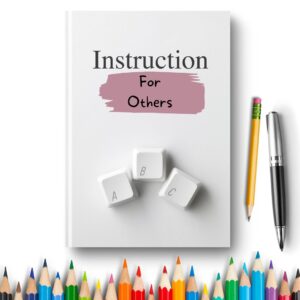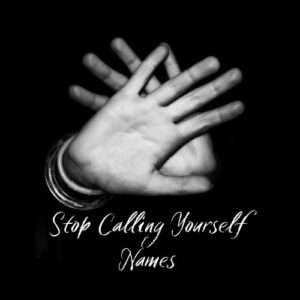Many years ago I was married to an imaginary partner. I had an instruction book for who he was supposed to be and my real partner did not measure up. No matter how much I tried to get him to follow my instructions, he stubbornly kept being himself. I was so preoccupied with the vision I had for us that I missed the real relationship, which left me heartbroken and disappointed. At the time, I blamed him for my emotional pain but I now see it was self-inflicted based on an attachment to someone I wanted him to be and a refusal to see him as he was.
We all have instruction books for how others should think, feel, and act, especially those close to us. We believe if we could just get them to be who we think they should be we would be happy.
If our partner would just be more affectionate.
If our boss only acknowledged our efforts.
If our parent would stop being so critical.
If our best friend would make more time for us.
Many of us spend a lot of time imagining a potential upgrade of someone in our life and then superimposing this new and improved version onto the one that’s there. What’s interesting is that we all crave belonging. We long to be seen and accepted for who we really are. Yet we miss the real people in our lives by saying, “I want you to be someone other than you are,” or “I need you to act this way so that I can think thoughts that make me feel good.”
Our instruction books go like this:
I want you to____ so I can think _____ and feel ____
We can get so infatuated with the fictional person in our minds that we deprive ourselves of loving the real people in our lives. And the imaginary person will always disappoint because they don’t exist. Clinging to this make-believe version of who we want blocks us from relating to the real people in our lives and always results in disconnection.
Nevertheless, it’s easy to become convinced of what we perceive as a simple fix to our relationship problems; for them to do what we want. If only they would comply! But they usually don’t and even when they do, eventually, they return to being themselves.
The solution is often a relentless campaign to force and enforce our instructions onto them. Employing strategies like passive aggression, coercion, withholding, complaining or manipulation only drive an ever-increasing wedge between us and those we care about. We justify that it’s coming from love, care, help, or protection and it usually is, but that doesn’t alter the result. As long as we keep our attention on what the other person is doing or not doing, we stay stuck in blame and avoid taking responsibility for who and how we want to show up in the relationship as it is.
It’s not another person’s responsibility to live in a way that makes it easy for us to feel good.
The truth is we can’t control other people. Have you noticed how hard it is to control ourselves sometimes?! Even when it comes to our children, control is limited. The reality is that people are allowed to think, feel and act the way they want. In turn, we also get to think, feel and act the way we want even when others don’t like it. Of course, there are consequences but that’s a different book.
Before I expect someone else to change their thoughts I need to be willing to change my own.
Think of someone in your life right now that you may be missing because of your attachment to who you want them to be? Who in your life are you creating negativity around because they aren’t acting the way you think they should? Now bring your instruction manual to full awareness by making a list of all the things you think they should do, how they should act, what they should say, feel, etc. Then consider that if they did all these things what would you then get to think and feel? (For example, s/he loves me or I’m not alone, etc.). The answer to this last question will give you the job description for the relationship with yourself. In other words, find where you’re not giving yourself (or the other person) the things you want from them. How can you work on your thoughts and feelings about yourself no matter how someone else acts?
What if you could create the thoughts and feelings you want without anyone else having to change?
Instead of putting all this energy into getting the other person to follow your instruction book so you can feel better, try a more direct route by shifting your focus back to where all your power is – on yourself. Instead of missing who you’re with, consider giving the other person permission to be themselves so you can focus on your own emotional well-being. See them not as the imaginary version but as the real deal and then ask yourself what you want to think, feel and do in the truth of the relationship. Doing this takes your power back so you can own the choice of how you want to show up with that person in a way that aligns with your values.



